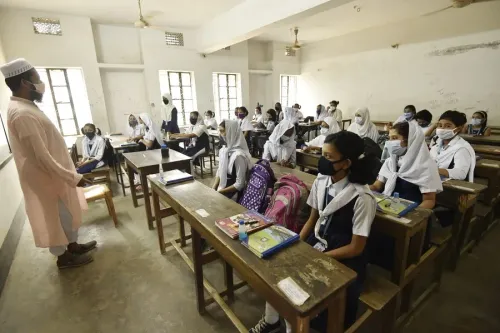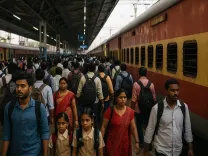Will economic inequality in Bangladesh continue to grow amid rising poverty and stagnant wages?

Synopsis
Key Takeaways
- Economic inequality in Bangladesh is worsening.
- The Gini index has risen since 2022.
- Urban areas face greater inequality than rural regions.
- Nearly 2 million more people may fall into poverty by 2025.
- Policies are needed to address these disparities.
New Delhi, Nov 27 (NationPress) A report indicates that economic disparity in Bangladesh is anticipated to escalate in the near future due to persistent high inflation, stagnant wages, and declining household purchasing power, putting additional strain on low-income families.
According to a recent World Bank evaluation published in Dhaka, an increasing number of individuals may descend into poverty as the divide between the affluent and the impoverished expands, as reported by The Daily Star.
The World Bank’s Poverty & Equity Assessment 2025 reveals that the Gini index, which gauges inequality from 0 to 100, has been on the rise since 2022 and is expected to continue its upward trajectory through 2025.
This trend indicates that wealth and income are becoming increasingly concentrated among higher-income households.
The report emphasizes that although overall consumption inequality in the nation has remained relatively stable, the situation varies across different regions.
In rural areas, consumption inequality has seen a slight decline, with the Gini index decreasing from 29.2 to 28.2.
Conversely, in urban settings where living expenses are elevated, inequality has deteriorated, with the urban Gini index rising from 33.1 to 34.5 — illustrating that city dwellers are experiencing more pronounced disparities in living standards.
Income inequality has surged even more sharply. When accounting for earnings, remittances, and asset returns, the Gini index increased from 51 to 54, signifying that wealthier households are benefiting significantly more than their poorer counterparts.
Bangladesh has grappled with escalating inequality for nearly two decades, but the World Bank cautions that the current challenges — including inflation and sluggish wage growth — are accelerating this trend.
Since 2016, consumption growth has increasingly favored the middle- and upper-income brackets, leaving the poorest households with minimal gains.
The report projects that nearly 2 million more individuals could find themselves in poverty by 2025, pushing the national poverty rate above 21%.
Since 2022, approximately 6 million people have already fallen into poverty. The poverty gap, which assesses how far the impoverished are from the poverty line, is also expected to widen by two points this year.
The effects of economic strain haven't been uniform. Households with highly skilled workers, better job prospects, or remittance income have managed to mitigate the worst impacts.
Some have even seen improvements in their economic conditions since 2022. This uneven distribution is expected to elevate overall inequality by nearly two Gini points by 2025, as noted in the report.









